The Story of Max Ernst Art
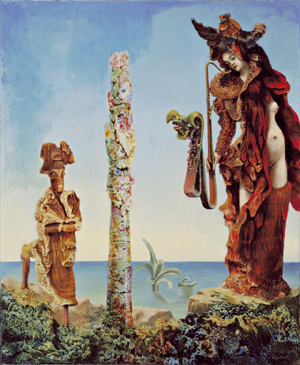 Max Ernst art shocked and enthralled in equal measure. The German-born artist was a highly-provocative yet innovative figure whose work. He was renowned for his surreal, dreamlike imagery and fought in the first World War, which he found to be an utterly traumatic experience that resulted in him condemning Western culture. He came to see the modern world as irrational, and this attitude spilled into his work. He was a pioneer of Dadaism and Surrealism and spent the vast majority of his life in France after being born in Germany. He was regarded as an “enemy alien” during WWII.
Max Ernst art shocked and enthralled in equal measure. The German-born artist was a highly-provocative yet innovative figure whose work. He was renowned for his surreal, dreamlike imagery and fought in the first World War, which he found to be an utterly traumatic experience that resulted in him condemning Western culture. He came to see the modern world as irrational, and this attitude spilled into his work. He was a pioneer of Dadaism and Surrealism and spent the vast majority of his life in France after being born in Germany. He was regarded as an “enemy alien” during WWII.
Attacking Conventions
Ernst had an excellent knowledge of the history of European art and mocked and challenged the conventions of art furiously. Max Ernst art mocked 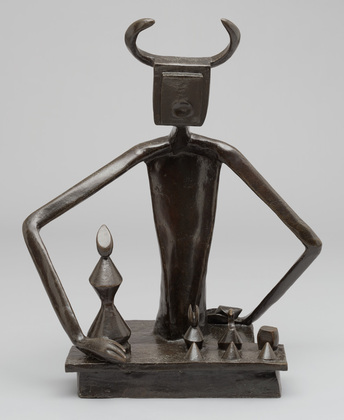 religious icons and had a strong interest in art produced by the mentally ill. Heavily influenced by Freud’s dream theories, he dug deep into himself to tap into his unconscious, aiming for a pre-verbal state of being, uncovering his primal emotions and using his own personal traumas as a foundation for his work. The technique of painting from the sub-conscious was also called automatic painting. This became a huge influence on the Abstract Expressionists.
religious icons and had a strong interest in art produced by the mentally ill. Heavily influenced by Freud’s dream theories, he dug deep into himself to tap into his unconscious, aiming for a pre-verbal state of being, uncovering his primal emotions and using his own personal traumas as a foundation for his work. The technique of painting from the sub-conscious was also called automatic painting. This became a huge influence on the Abstract Expressionists.
Pushing Boundaries
Much of Ernst’s work was based around undermining authority. He was raised as a Catholic and is seen as one of the art world’s key innovators despite having no formal training in art. 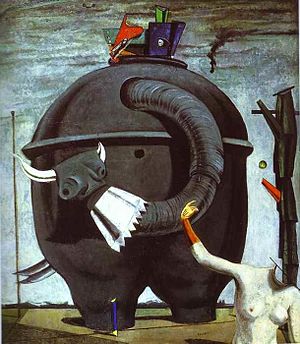 He was influenced by the likes of Van Gogh, de Chirico and Macke and used his childhood and military experiences to create shocking and absurd works. After the first world war, He used materials like catalogues and manuals to create avant-garde works and held a Dada exhibition where a young girl read obscene poetry and the public were invited to destroy artwork with an axe.
He was influenced by the likes of Van Gogh, de Chirico and Macke and used his childhood and military experiences to create shocking and absurd works. After the first world war, He used materials like catalogues and manuals to create avant-garde works and held a Dada exhibition where a young girl read obscene poetry and the public were invited to destroy artwork with an axe.
Max Ernst Art: Frottage, Grattage and Decalcomania
In 1925, Max Ernst art began with frottage (rubbing from textured surfaces), grattage (scratching at the surface of paintings), and decalcomania (pressing surfaces against wet paintings to alter them), producing experimental and innovative textures, patterns,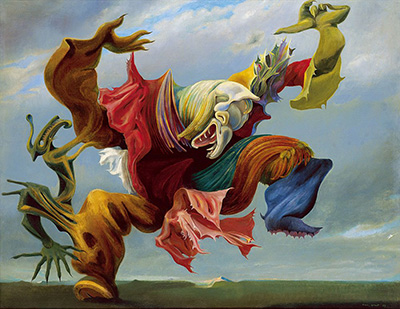 and images that were then built into complete works. He was interested in the relationship between textures and collective consciousness, which played a pivotal role in the Surrealist theme of automatism. His son, Jimmy Ernst, became a leading Abstract Expressionist painter in his own right. Later in life, Ernst became fascinated with Southwest Native American Navajo art, with various Abstract Expressionists experimenting with sand painting.
and images that were then built into complete works. He was interested in the relationship between textures and collective consciousness, which played a pivotal role in the Surrealist theme of automatism. His son, Jimmy Ernst, became a leading Abstract Expressionist painter in his own right. Later in life, Ernst became fascinated with Southwest Native American Navajo art, with various Abstract Expressionists experimenting with sand painting.
The pre-WWII era
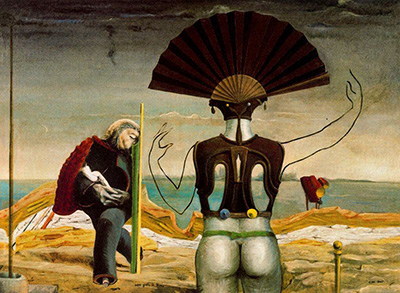 Ernst used an alter ego in his paintings; a bird called Loplop. He said the alter ego was the result of him confusing birds and humans during his childhood. As a child, he was told his baby sister had been born moments after his pet bird passed away. One of Ernst’s most controversial works was the 126 painting The Virgin Chastises the infant Jesus before Three Witnesses: André Breton, Paul Éluard, and the Painter. He started to work with sculpture in 1934, and several of his works were
Ernst used an alter ego in his paintings; a bird called Loplop. He said the alter ego was the result of him confusing birds and humans during his childhood. As a child, he was told his baby sister had been born moments after his pet bird passed away. One of Ernst’s most controversial works was the 126 painting The Virgin Chastises the infant Jesus before Three Witnesses: André Breton, Paul Éluard, and the Painter. He started to work with sculpture in 1934, and several of his works were 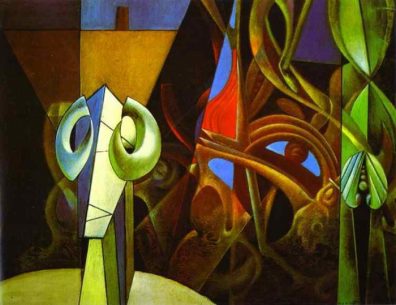 acquired by his future wife, Peggy Guggenheim, in 1938. His marriage to Guggenheim lasted until 1946. Key works from his first French period include Pietà, or Revolution by Night (1923), Of This Men Shall Know Nothing (1923), Rendezvous of Friends – The Friends Become Flowers (1928), and the Loplop series. The graphic novel A Week of Kindness was published in 1934 and featured various themes associated with Max Ernst art, including sex, violence, and anti-clericism.
acquired by his future wife, Peggy Guggenheim, in 1938. His marriage to Guggenheim lasted until 1946. Key works from his first French period include Pietà, or Revolution by Night (1923), Of This Men Shall Know Nothing (1923), Rendezvous of Friends – The Friends Become Flowers (1928), and the Loplop series. The graphic novel A Week of Kindness was published in 1934 and featured various themes associated with Max Ernst art, including sex, violence, and anti-clericism.
